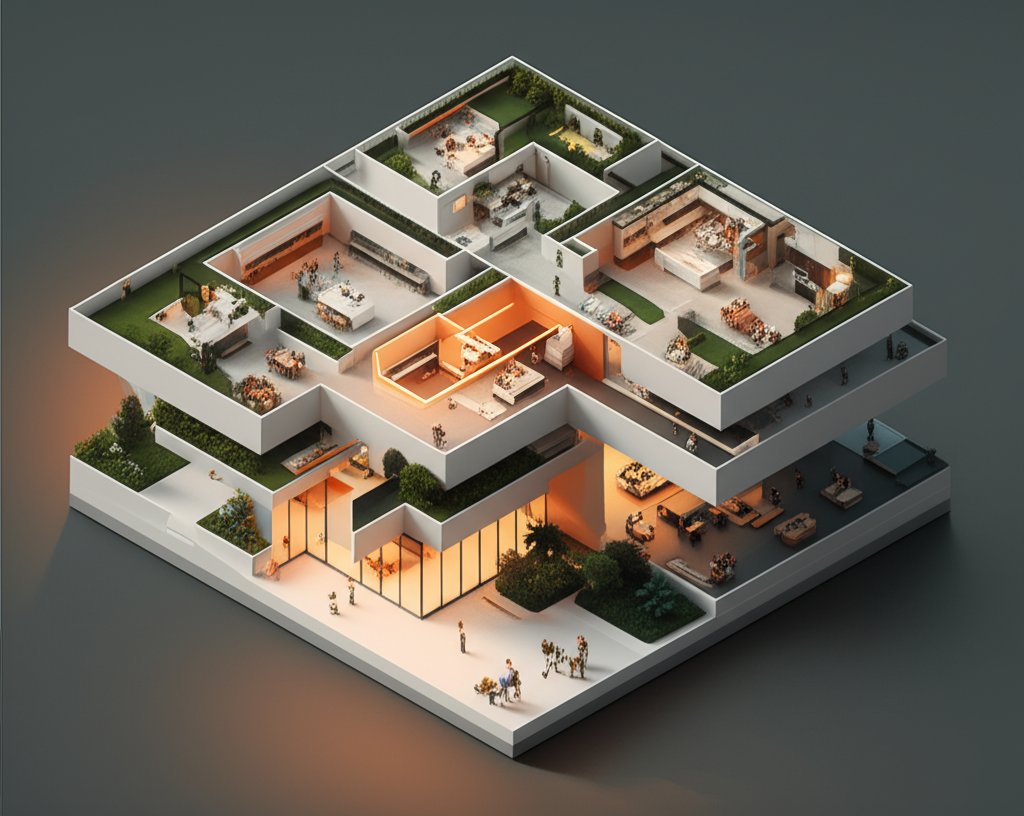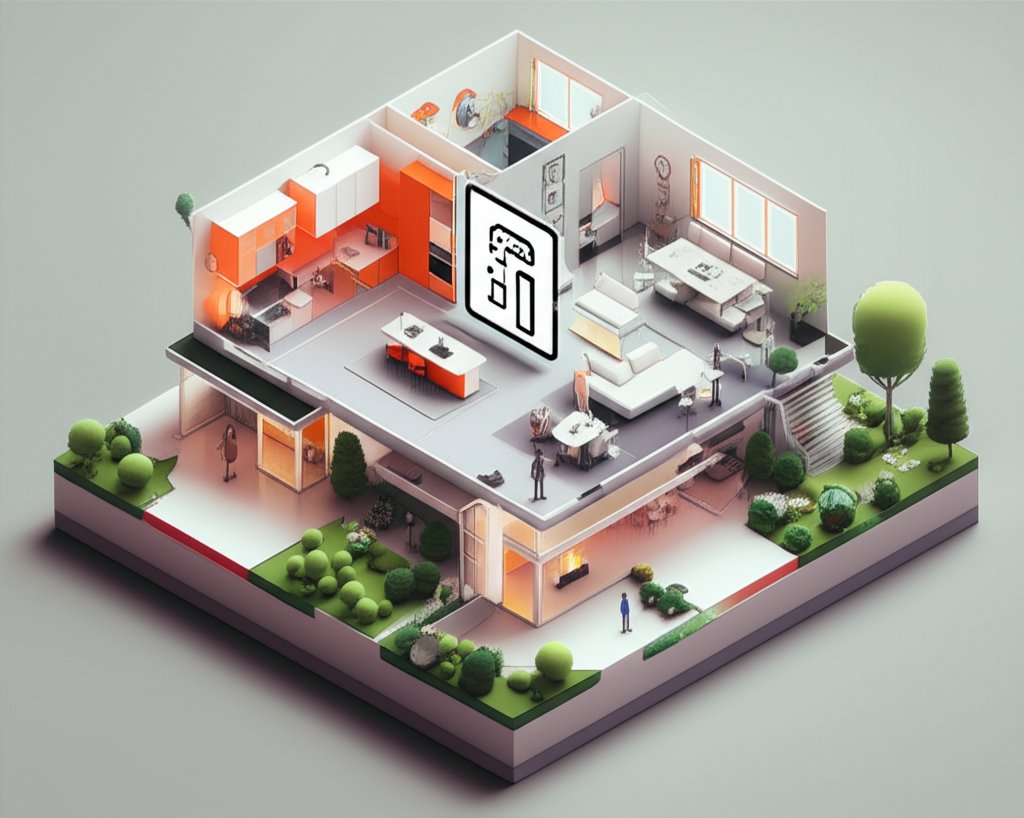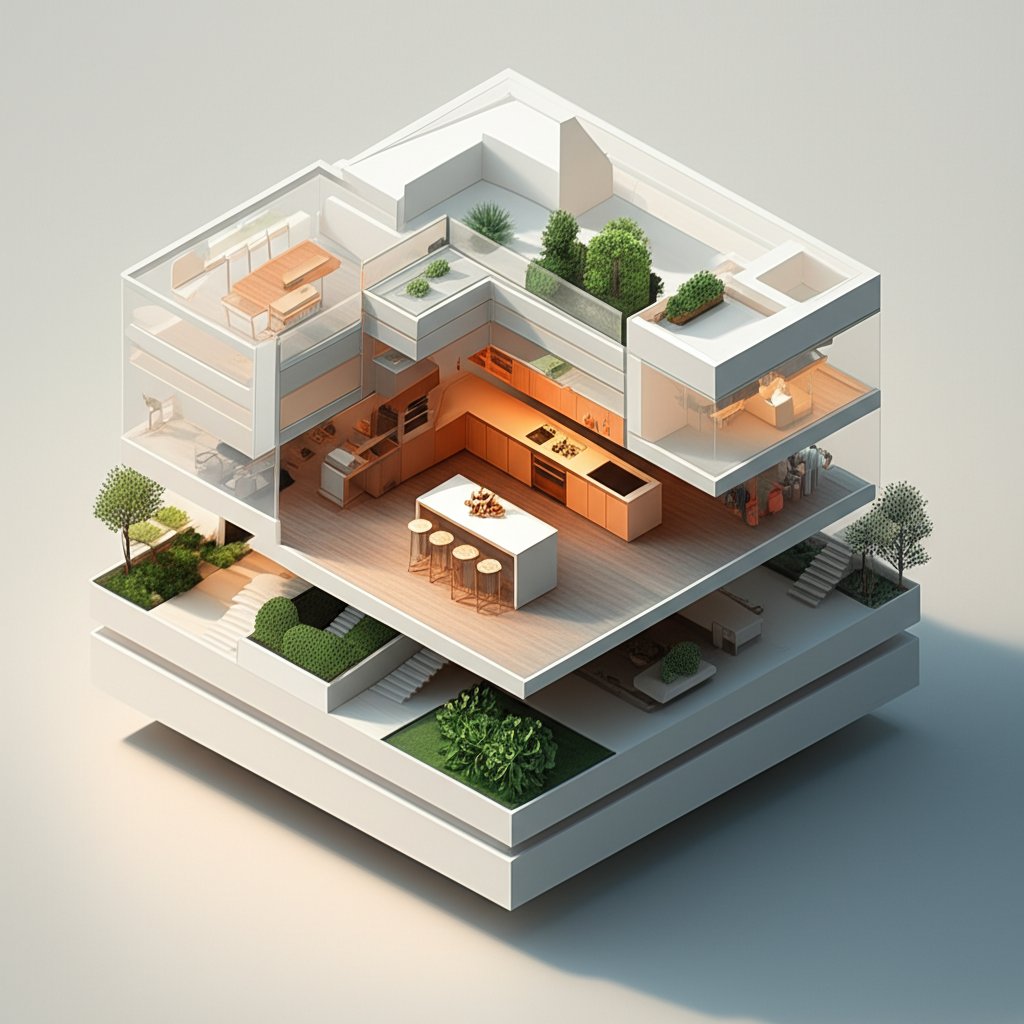Imagine a kitchen where the boundaries blur, where cooking, dining, and living seamlessly merge. That’s the magic of open concept kitchen floor plans with island. They’re not just trendy; they’re transformative, fostering connection and creating a hub for modern living. But realizing this vision requires careful planning.
At a glance:
- Functionality First: Prioritize the flow of your kitchen, especially the “work triangle.”
- Island as a Hub: Design your island to be more than just counter space, consider seating, a cooktop, or a prep sink.
- Seamless Integration: Ensure your kitchen’s style complements the adjoining living spaces.
- Lighting is Key: Layer ambient, task, and accent lighting for both function and aesthetics.
- Maximize Storage: Utilize vertical space and clever storage solutions to keep the open space uncluttered.
The Allure of Open Concept Kitchens with Islands
The open concept kitchen isn’t exactly new. It started gaining popularity in the 1950s, particularly in ranch-style homes, as a way to maximize space and create a more social atmosphere. Today, it’s a staple in modern homes for similar reasons:
- Social Connection: Open kitchens encourage interaction between the cook and family or guests. No more feeling isolated while prepping meals!
- Enhanced Space: Removing walls visually expands the living area, making the entire home feel larger and more airy.
- Better Airflow: Open layouts allow for improved ventilation, helping to dissipate cooking odors.
- Natural Light: Removing walls often allows more natural light to flood the space.
Planning Your Open Concept Kitchen: The Work Triangle & Beyond
Before diving into design specifics, let’s address a fundamental concept: the work triangle. This tried-and-true principle, dating back over 70 years, focuses on the efficient arrangement of the three primary work areas: the sink, the stove (or cooktop), and the refrigerator.
- The Core Idea: The work triangle aims to minimize steps between these key zones.
- Optimal Distances: Each leg of the triangle should ideally be between 4 and 9 feet. The total length of all three sides should fall between 13 and 26 feet.
- Why it Matters: A well-planned work triangle streamlines cooking and food prep, reducing wasted movement and creating a more functional space.
However, modern kitchen design often expands upon the traditional work triangle. Consider these additions: - The Island’s Role: The island can become a central hub, incorporating a prep sink, cooktop, or even a secondary workstation.
- Multiple Cooks: If multiple people frequently use the kitchen, consider creating multiple work zones to avoid congestion.
- Workflow Analysis: Think about how you actually use your kitchen. Do you bake frequently? Do you entertain often? Tailor the layout to your specific needs.
Open Concept Kitchen Layouts Featuring Islands: Finding Your Perfect Fit

Several common layouts work well in open concept kitchens with islands. Here are a few popular options, along with their strengths and weaknesses:
1. L-Shaped Kitchen with Island:
- Description: An L-shaped layout features countertops and cabinets along two adjacent walls, forming an “L” shape. The island sits centrally in the open space.
- Pros: Efficient use of corner space; good for small to medium-sized kitchens; promotes an open feel; the island provides ample prep space and seating.
- Cons: Can feel cramped if the island is too large or the space is too small.
Example: A 16 ft x 14 ft kitchen with a 6 ft x 3 ft island provides ample space, leaving room for comfortable movement.
2. U-Shaped Kitchen with Island: - Description: A U-shaped layout features countertops and cabinets along three walls, forming a “U” shape. The island sits within the “U,” creating a central workstation.
- Pros: Maximizes counter space and storage; excellent workflow; ideal for larger kitchens; the island can serve as a focal point.
- Cons: Requires a larger space; can feel closed off if the “U” is too narrow.
3. Galley Kitchen with Island: - Description: A galley kitchen features two parallel runs of countertops and cabinets. The island runs parallel between them, creating a central workspace.
- Pros: Efficient use of space; good for narrow rooms; can be easily adapted to an open concept.
- Cons: Can feel cramped if the aisle between the countertops and island is too narrow.
4. Peninsula Kitchen: - Description: While not technically an “island” kitchen, a peninsula (a countertop that extends from one wall, creating a connected island) can function similarly in an open concept.
- Pros: Good for smaller spaces where a full island might not fit; creates a clear division between the kitchen and living area.
- Cons: Can feel less open than a true island layout.
Island Design: More Than Just a Counter
The island is often the heart of an open concept kitchen with island, so it’s important to get the design right. Consider these factors:
- Size and Shape: The island’s size should be proportional to the kitchen’s overall dimensions. Ensure adequate aisle space (at least 36 inches, ideally 42 inches) around the island for comfortable movement. Think about the shape: rectangular, square, or even curved islands can add visual interest.
- Functionality: Determine how you want the island to serve you. Do you need additional prep space? Casual dining? A cooktop or sink? Built-in storage?
- Seating: If you plan to use the island for seating, ensure a comfortable overhang (at least 12-15 inches) for legroom. Consider the type of seating: bar stools, chairs, or a combination. Many explore island kitchen layout ideas before deciding on these functional elements.
- Storage: Incorporate drawers, cabinets, and shelves into the island to maximize storage space. Consider specialized storage solutions, such as pull-out shelves for pots and pans or spice racks.
- Materials and Finishes: Choose materials and finishes that complement the rest of the kitchen and the adjoining living spaces. Consider using a contrasting color or material for the island to make it a focal point. A butcher-block countertop can add warmth and character.
- Electrical Outlets: Don’t forget to include electrical outlets on the island for small appliances and charging devices. Wiring electricity to the island early in the planning process is key.
Seamless Integration: Connecting the Kitchen to the Living Space
One of the biggest challenges in designing an open concept kitchen is creating a cohesive design that flows seamlessly into the adjoining living spaces. Here are some tips for achieving this:
- Consistent Style: Choose a consistent style for the kitchen and living spaces. This doesn’t mean everything has to match exactly, but the overall aesthetic should be harmonious. For example, a modern kitchen might flow into a contemporary living room with similar clean lines and minimalist decor.
- Color Palette: Use a consistent color palette throughout the open space. Choose a few key colors and use them in different variations and combinations to create a sense of unity.
- Flooring: Consider using the same flooring throughout the open space to create a sense of continuity. If you prefer different flooring in the kitchen and living area, choose materials that complement each other.
- Lighting: Use similar lighting styles in the kitchen and living spaces to create a cohesive atmosphere. Consider layering ambient, task, and accent lighting to create depth and interest.
- Furniture: Choose furniture that complements the style of the kitchen and living spaces. Consider using similar materials and finishes to create a sense of unity. The goal is for island living room design ideas to blend seamlessly.
Lighting Your Open Concept Kitchen: Functionality and Ambiance

Lighting is crucial to the success of any kitchen design, but it’s especially important in an open concept space where the kitchen is integrated into the living area. A well-lit kitchen is both functional and inviting. Consider these different types of lighting:
- Ambient Lighting: Provides overall illumination for the space. Recessed lighting, chandeliers, and pendant lights can all be used to create ambient lighting.
- Task Lighting: Provides focused light for specific tasks, such as cooking, food prep, and cleaning. Under-cabinet lighting is essential for illuminating countertops. Pendant lights over the island can also provide task lighting.
- Accent Lighting: Highlights specific features, such as artwork, architectural details, or decorative objects. Track lighting and spotlights can be used to create accent lighting.
Tips for lighting your open concept kitchen: - Layer your lighting: Use a combination of ambient, task, and accent lighting to create a well-lit and inviting space.
- Consider dimmers: Install dimmers on your lighting fixtures to control the brightness and create different moods. Warm and soft lighting is often preferred.
- Pay attention to color temperature: Choose light bulbs with a color temperature that complements the overall style of your kitchen.
- Don’t forget natural light: Maximize natural light by incorporating large windows and skylights.
- Pendant lights over the island: These add both style and practical illumination, becoming a focal point.
Storage Solutions for Open Concept Kitchens: Taming the Clutter
Open concept kitchens can easily become cluttered if not properly organized. Maximize storage with these tips:
- Tall Pantry Cabinets: These make good use of vertical space and help keep counters uncluttered.
- Deep Drawers: Install deep drawers under the island for storing pots, pans, and mixing bowls within easy reach.
- Under-Cabinet Storage: Install organizers and pull-outs to maximize the usability of your base cabinets.
- Open Shelving: Use open shelving for frequently used items, such as dishes, glasses, and cookbooks. Be mindful to keep these shelves tidy.
- Hidden Storage: Incorporate hidden storage solutions, such as pull-out trash cans and appliance garages, to keep the kitchen looking clean and organized. Hidden storage islands can be particularly effective.
- Labeled Bins: Organize the pantry with labeled bins or baskets to help facilitate usability.
Common Questions About Open Concept Kitchens with Islands
- Q: Are open concept kitchens still trendy?
- A: Yes, open concept kitchens remain popular due to their social and spatial benefits. However, design trends are evolving, with some homeowners seeking a balance between open and closed spaces.
- Q: How do I prevent cooking smells from spreading throughout the house?
- A: A powerful range hood is essential. Also, good ventilation and prompt cleaning will help.
- Q: What is the ideal size for a kitchen island?
- A: The ideal size depends on the overall kitchen dimensions and intended use. Ensure adequate aisle space (at least 36 inches, ideally 42 inches).
- Q: How do I choose the right countertop material?
- A: Consider factors such as durability, maintenance, cost, and aesthetics. Popular choices include granite, quartz, marble, and butcher block.
- Q: How do I make my open concept kitchen feel more cozy?
- A: Incorporate warm lighting, soft textures, and comfortable seating. Add rugs, throw pillows, and plants to create a more inviting atmosphere.
Actionable Steps: Bringing Your Open Concept Kitchen Dream to Life
Ready to transform your kitchen? Here are some actionable steps to get you started:
- Define Your Needs: Start by identifying your specific needs and priorities. How do you plan to use the kitchen? How many people will be using it? What are your storage requirements?
- Measure Your Space: Accurately measure your kitchen and the adjoining living spaces. Create a floor plan to visualize the layout.
- Explore Layout Options: Experiment with different layout options to find the best fit for your space and needs. Consider using online kitchen design tools or consulting with a kitchen designer.
- Design Your Island: Plan the size, shape, functionality, and storage of your island. Choose materials and finishes that complement the rest of the kitchen.
- Select Your Appliances: Research and select appliances that fit your needs and budget. Consider energy-efficient models to save money on your utility bills.
- Choose Your Finishes: Select countertops, cabinets, flooring, and lighting that complement the overall style of your kitchen and the adjoining living spaces.
- Hire Professionals: Consider hiring professionals, such as a kitchen designer, contractor, or electrician, to help with the design and installation process.
- Stay Organized: Keep your kitchen clean and organized to maintain the open feel and prevent clutter from taking over.
Creating an open concept kitchen with island is a rewarding project that can transform your home and enhance your lifestyle. By carefully planning the layout, design, and storage solutions, you can create a beautiful and functional space that is perfect for cooking, entertaining, and spending time with family and friends. Remember to coordinate the island’s finish with your kitchen cabinet paint or backsplash for visual flow.
- Backsplash For Gray Cabinets: Choosing the Right Backsplash Style - December 13, 2025
- Gray And White Backsplash: Ideas For Timeless Style - December 12, 2025
- Gray Kitchen Backsplash Ideas: Find Your Perfect Gray Tile - December 11, 2025









